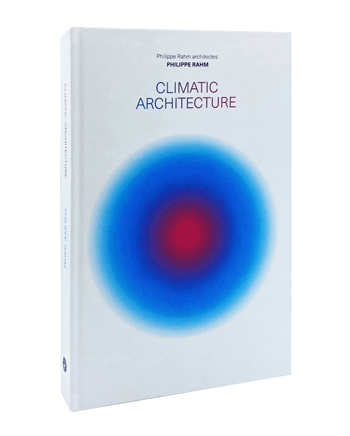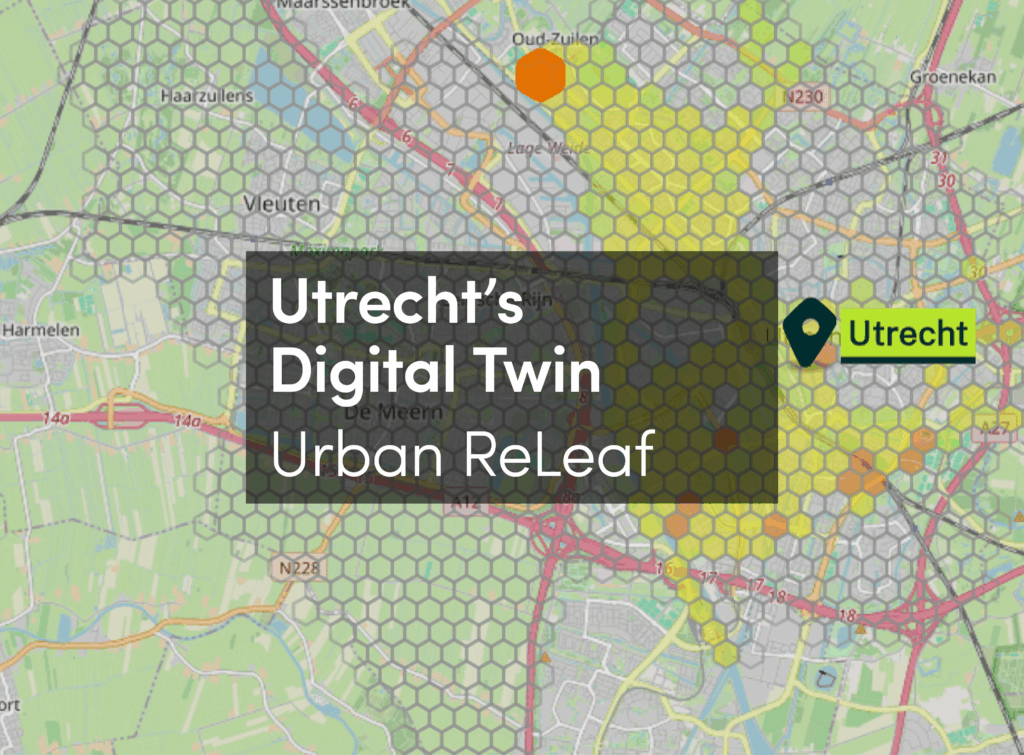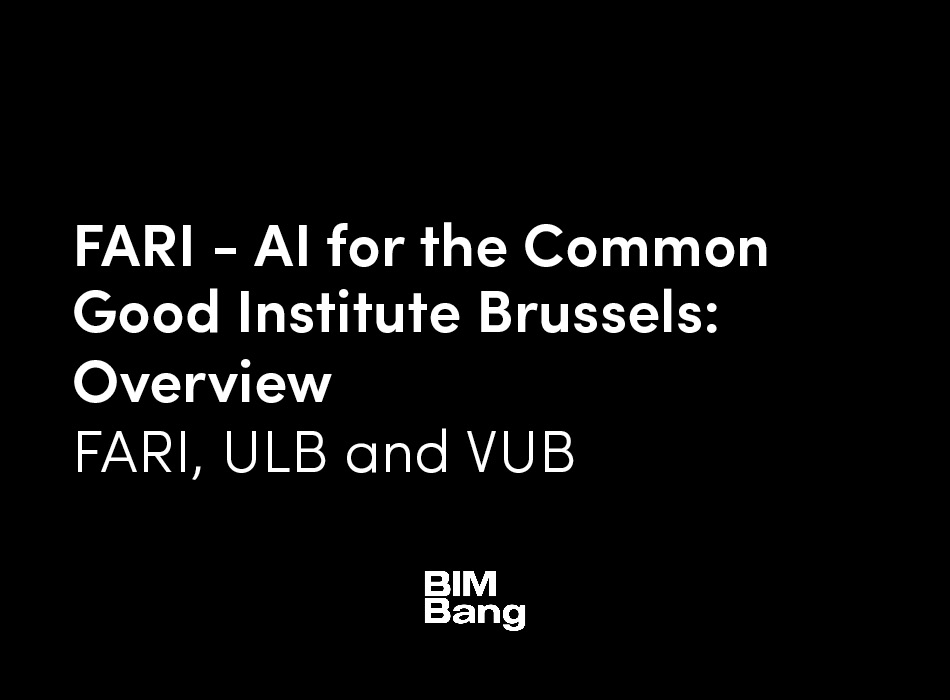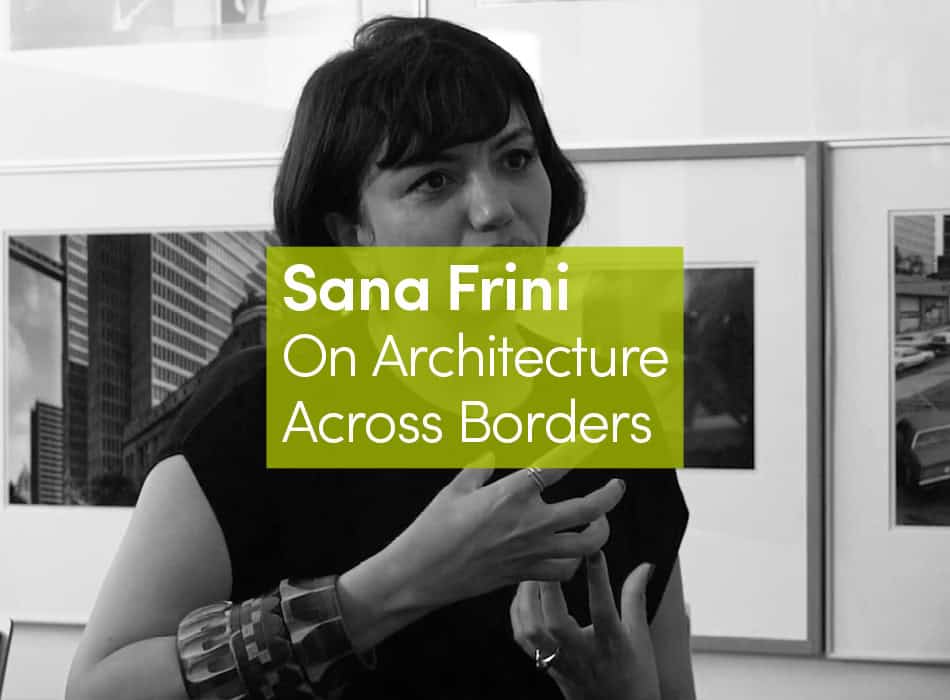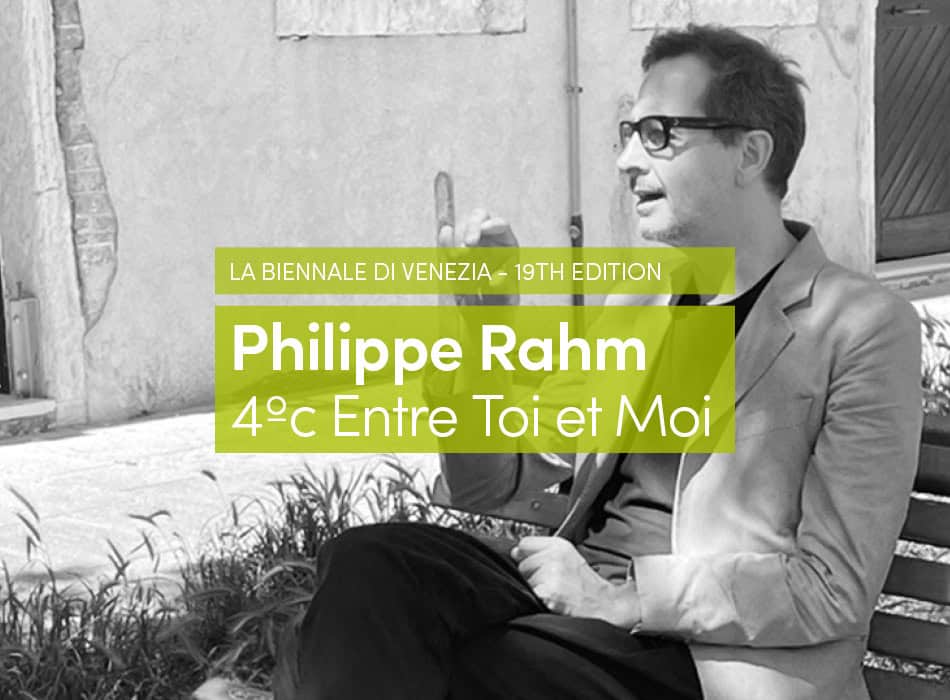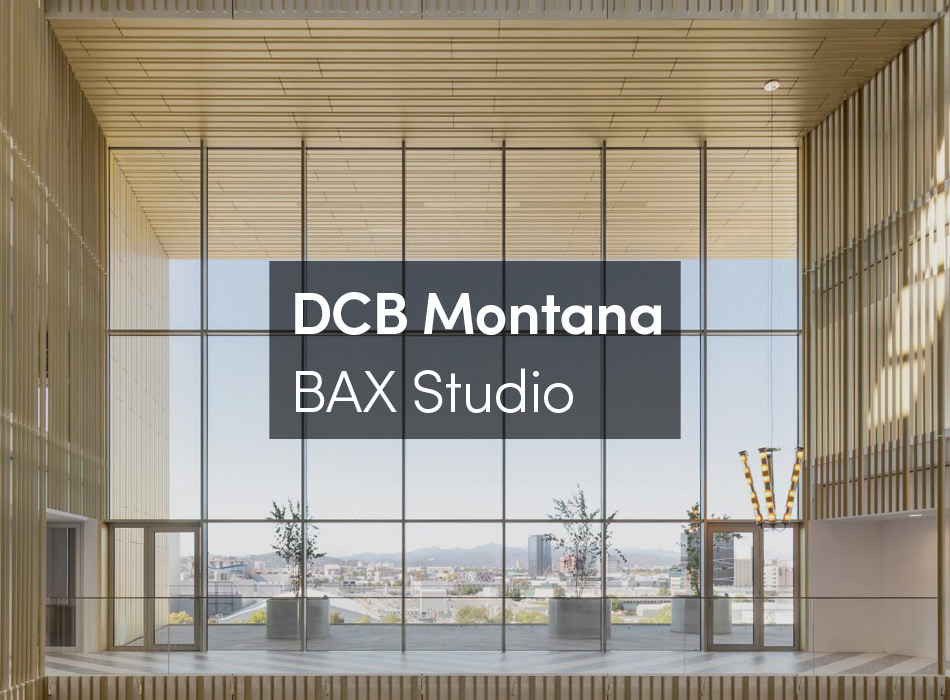Urban planning, that is to say the way in which cities are conceived and designed, the choice of where to build, the orientation of their streets, the shape of islets, the position of the buildings, was traditionally based on health and climate which, moreover, were totally linked to each other. This is what can be seen in the treatises of Vitruvius, the architect of the Roman Empire in the 1st century BC, or Leon Battista Alberti, the Italian Renaissance architect of the 15th century, who recommended analyzing a place’s humidity and temperatures before founding a city, relying on exposure to the wind and orientation to the sun to position and draw the layout of streets, squares and buildings, understand the flora and the geology to choose building materials in accordance with the local resources.

Fig. 1. Air temperature cross-section. Central Park, Taichung, Taiwan. In the heat represented in red, the white represents the colder areas in the park, cooled by shade, by convective air flows cooled by geothermal energy.
Choices of exposure to wind and sun, the attention paid to air humidity and temperature, the management of shade and orientation, the passage of the wind, architecture and urban planning are totally intertwined meteorologically and astronomically speaking. The aim sought by this architectural classicism in these analyses of the climate, the measurements of wind directions, of the movement of the sun, is to enable designing the city and its forms in such a way as to ensure the good health of its inhabitants, their thermal survival, so that they are neither too cold nor too hot, in an clearly pre-industrial energy setting, that is to say relatively weak and fragile in the face of climatic hazards, in the face of the seasons, in the face of the heat of summer or the cold of winter and in the face of infectious agents that were not known about and for which there were no cures. For people died in the cities of yesteryear, of cholera, of the plague, but also of cold.
Vitruvius immediately explains in the first pages of his Ten Books that the architect’s knowledge must include medicine: “The architect should also have knowledge of the study of medicine on account of the questions of climates (in Greek klimata), air, the healthiness and unhealthiness of sites. For without these considerations, the healthiness of a dwelling cannot be assured.” For Vitruvius, the architect’s knowledge must then also include astronomy, that is to say knowledge of the movement of the sun and the earth in relation to the geography, making it possible to orient cities and buildings according to the path of the sun, to avoid, for example, the excess heat brought by full exposure to the south, both to protect people and to protect foodstuffs: “From astronomy we find the east, west, south, and north, as well as the theory of the heavens, the equinox, solstice, and courses of the stars. If one has no knowledge of these matters, he will not be able to have any comprehension of the theory of sundials.“
In the Renaissance, Leon Battista Alberti also engages climate and health in architecture, with recommendations concerning architecture where he describes the features of buildings in relation to the wind, the sun, their orientation such as the following: “Shade and good ventilation will suit summer rooms, and the rays of the sun winter rooms… Winter rooms will be small, with a low ceiling and small windows. Summer rooms, on the contrary, will have a high ceiling, be wide, spacious and open to cool breezes but not to the sun or to the warm air coming from the south. A large amount of air enclosed in a large room is like a large amount of water: it is not easy to heat. “ And also: “The roof, driving and pushing back the night, the rain and especially the heat of the sun” or when he breaks down and identifies the different functions of a window: “Two types of openings: one allows light and wind, the other allows people and things to enter and leave the building.”
There is nothing fundamentally strange in these realistic proposals, which, read in the twenty-first century, come across as being common sense, but they were in fact fully activated by the constant risks of disease that threatened people until the twentieth century, and especially city dwellers, as well as by humans’ low availability of energy which, until the coal revolution of the nineteenth century, rendered them extremely fragile and disadvantaged to fight against cold, heat or hunger.

Fig. 2. Air humidity cross-section. Central Park, Taichung, Taiwan. In a naturally humid tropical climate represented in blue, the white represents the drier areas in the park, as they are far from water points.
These fundamental climatic causes and means of urban planning were ignored during the twentieth century thanks to the widespread use of fossil fuels by hydraulic pumps, motors, refrigerators, heating and artificial air-conditioning systems, electric lighting to overcome all physical and natural constraints, all considerations concerning the natural climate, the path of the sun and the distribution of the winds. Thanks to coal and antibiotics, we were able to build cities wherever we wanted and buildings at will. Fuel oil or electrically-powered central heating, air-conditioning, artificial lighting, all these techniques that appeared as of the second half of the nineteenth century, enabled inside houses, fighting all climatic problems, cold, heat, humidity, darkness inherent in the natural geographical location of the city or the building. What Vitruvius and Alberti tried to solve in the past by precisely sizing a room, the windows and their orientation, the form of a street, the shape of a building, no longer mattered as of the nineteenth century. All this attention to the natural climate and geography was no longer useful, no longer important in view of the ease, simplicity and efficiency of modern heating, ventilation, air-conditioning, refrigeration and electric lighting techniques that attenuate, compensate for and eradicate all natural excesses of cold, heat, humidity, sun, darkness, lack of water or food. These modern building techniques make it possible to no longer worry about the weather and astronomy, to live henceforth in any climate, any season, any latitude, any altitude, the desert and the mountain be it in the far north or in the burning tropics, at night and in winter, without having to worry about the natural climate, the winds, the sunshine, the temperature and the humidity of the outside air. Thanks to fossil fuels, architecture manufactures within buildings spaces that are perpetually conditioned around 21° Celsius, with constant relative humidity of 50%, which in the few cubic meters of the air of a room infinitely recreate the temperate conditions of a “perpetual Mediterranean climate” according to the expression coined by René Dubos in the book “Mirage of Health”. Central heating and air-conditioning have allowed man to colonize and comfortably inhabit any part of the earth, to equally inhabit the heart of the moist heat of the rainforest and the dark coldness of the icy poles. Because coal and oil are actually the energy of fossilized pleasant prehistoric climates, heat petrified under the earth of an ancient sun, a “portable climate” as described by the American philosopher Ralph Waldo Emerson in the mid-nineteenth century: “Every basket [of coal] is power and civilization. For coal is a portable climate. It carries the heat of the tropics to Labrador and the polar circle; and it is the means of transporting itself whithersoever it is wanted. Watt and Stephenson whispered in the ear of mankind their secret, that a half-ounce of coal will draw two tons a mile, and coal carries coal, by rail and by boat, to make Canada as warm as Calcutta, and with its comforts bring its industrial power. “
Unfortunately, however, carbon-based energy that was massively combusted during the twentieth century is now causing global warming, air pollution and a collateral effect, the urban heat island as it is called, namely an increase in heat in the city where the air temperature is 5° Celsius higher than in the surrounding rural areas and especially at night when it does not drop, unlike in the countryside. Because the construction sector is responsible for 39% of greenhouse gas emissions, because year after year this global warming multiplies heat waves in the cities, because fine particulate pollution PM 2.5, a volatile residue of the combustion of fossil fuels, becomes a public health issue, architects and urban planners must now reintegrate the local climate context and that of renewable energy resources as an engine of urban development and in the design of public spaces to reduce the consumption of fossil energy, reduce the release of fine particles, lower the temperature of cities, in a fight against global warming, against air pollution, against the effects of urban heat islands.
What is required today is to base urban master plans on geography, on the wind, on the movement of the sun, on the movement of pollutants in order to reduce energy consumption, global warming, urban heat and air pollution. What is needed is to think of a city that is no longer dependent on fossil fuels but on renewable energies, by improving the comfort of public spaces, by building without energy microclimates that are conducive to human life.
The measures to be taken on an urban scale to combat the phenomenon of urban heat islands, air pollution and global warming are the following:
1. Albedo – Increase the albedo of roofs and roads, meaning that all of the city’s horizontal surfaces must be as light as possible, or even white.
2. Convective cooling – To avoid excess heat, it is necessary to extend the phenomenon of convective cooling, that is to say, to invent a wind like the breeze which moves the air from a cooler part to a warmer part, sweeping the city, allowing the heat which accumulates and rises in temperature due to a lack of movement of air when it remains stationary to be evacuated.
3. Cooling by evaporation – Evaporation can also be caused by planting trees or activating fountains, that is to say by dissipating liquid form water into the air which will evaporate naturally, turning into gas. The energy necessary for this physical phase change to take place, from the liquid phase to the gaseous phase, will be taken from the temperature of the air, which will decrease.

Fig. 3. Air pollution cross-section. Central Park, Taichung, Taiwan. In a polluted environment represented in black, the white represents the less polluted areas in the park, because away from roads, or protected by trees with porous trunks to absorb noise or resinous to absorb air pollutants type PM2.5.
Every city in the world today also suffers from carcinogenic PM 2.5 fine particle pollution. To limit this pollution, there is an obvious need to act on its cause, that is to say, to limit the emission of fine particles by doing away with diesel engines or by better filtering industrial emissions. Secondarily, these particles can be caught in the branches of trees. The species of trees planted to capture fine air particles are above all conifers which, thanks to their resin, catch the fine particles, and some deciduous leaves with a marked, particularly hairy relief.
What we are seeing today is that from now on, urban planning and landscaping plans must integrate the climate issue into their project; or even make it the basis of their design in the fight against urban heat, against air pollution and against global warming. What we see is that once again urban planning is reconnected to the Vitruvian foundations of its discipline, reintegrating the climate, the path of the sun, the passage of the winds. Architecture and urban planning regain their original role: to be “the art and industry which remedy the inconvenience of the nature of the place, and that in each region a suitable temperature is provided to the dwellings by exposure appropriate to their position on the earth“.
Today, global warming, increasing heat waves, the urban heat island phenomenon, increased flooding, air pollution, are completely disrupting the purpose and means of urban planning and the landscape. These physical, material, climatic, ecological truths and the means put in place to resist them have social as well as aesthetic consequences in the design and use of the city and the landscape, and our job is to transform these new constraints into assets by allowing, by abandoning the urban planning of the twentieth century dominated by the car and visual attractiveness, opening up other more sensual, more egalitarian, more varied ways of life to the diversity of humans and non-humans, with a more ecological and social focus and to promote a healthy environment. The fight against global warming and its catastrophic and everyday effects must be fought on two fronts. Firstly, by acting on the causes, that is to say by reducing CO2 emissions both in the operation of built structures and by controlling the carbon footprint of building materials and construction, reducing the emissions of pollutants, those emitted by burning fossil fuels, namely PM 10 and PM 2.5. Secondly, by acting on the consequences, by fighting against heat using the wind, the water evaporation, the albedo, shade, through the choice of materials according to their thermal inertia, their thermal emissivity and effusivity. By fighting floods by thinking of the landscape and its hills as a holding tank to absorb flood waters, by increasing permeable surfaces to absorb and delay rainfall, by thinking about the landscape, parks, gardens as well as squares and streets as places of freshness in summer without forgetting their comfort in winter by creating public spaces sheltered from wind, rain and snow.
In a way, there is also a need to return to pre-modern strategies, before fossil fuels, those described by Vitruvius, Alberti or Palladio, to counter excess heat. Also to return to the vernacular knowledge, the adiabatic refreshment of cities in the Middle East as well as the protections from the cold typical of Swiss villages.





